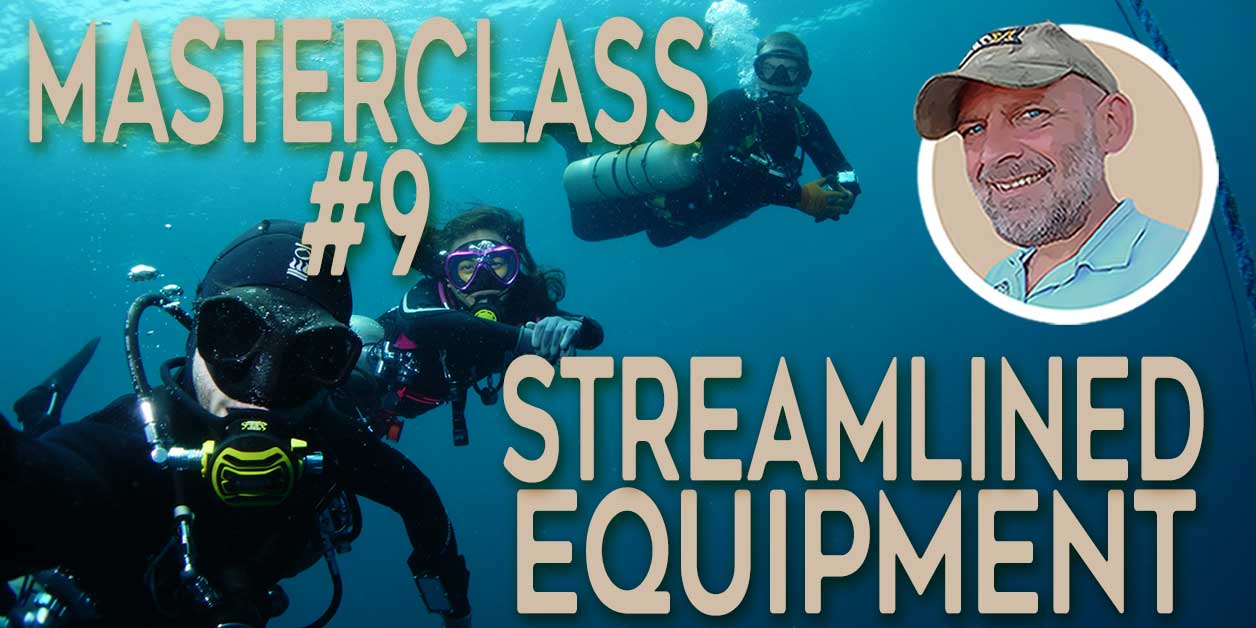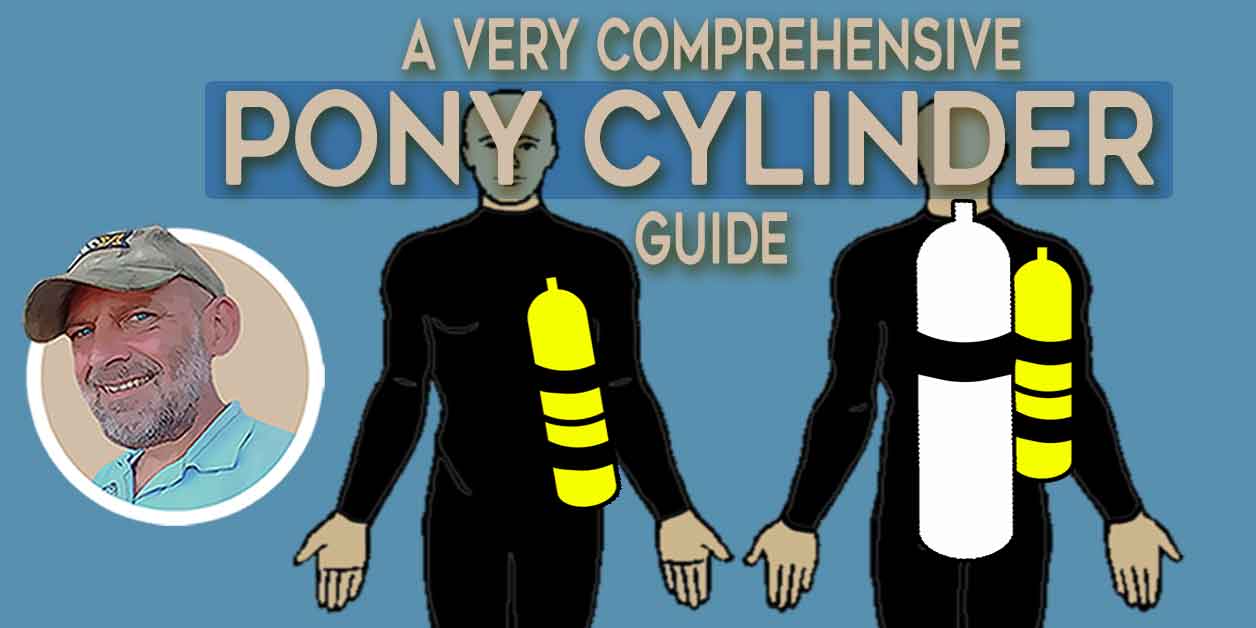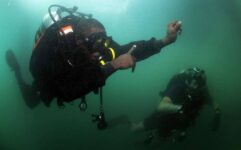Optimizing Configuration For Your Backplate and Wing BCD
Improving your diving requires more than just training, experience, and deliberate practice – it demands the right gear configuration. In this guide, you will discover the benefits of a backplate and wing BCD. Additionally, you will learn how to optimally configure it, embracing the principles of DIR (Do It Right) and Hogarthian concepts.
Whether you’re a novice diver or a seasoned pro, these insights will help you achieve a streamlined, balanced, and efficient dive gear setup that enhances your underwater experiences.
Key Points in this Article:
- Learn why backplate and wing BCDs are increasingly popular
- Discover the core principles of DIR and Hogarthian gear configuration.
- Understand the safety value of KISS minimalism and how it impacts situational awareness and cognitive loading.
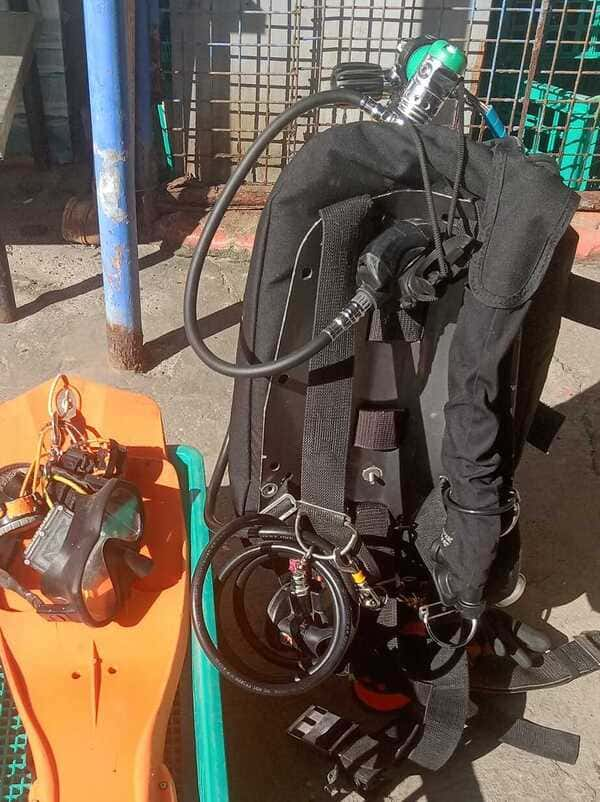
Why choose a Backplate and Wing BCD?
- In the past, divers typically associated backplate and wing BCDs with the realm of double tank technical diving.
- However, single-tank backplate and wing BCDs have surged in popularity over the last two decades.
- Backplate and wing BCDs are favored by experienced divers and introduce a host of benefits that traditional jacket-style BCDs simply cannot offer.
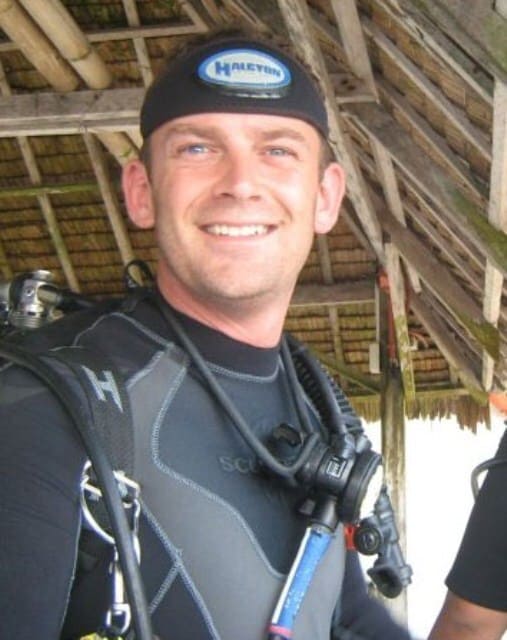
Advantages of the Backplate and Wing BCD
The traditional open water jacket-style BC not only tends to be bulky and ill-fitting, but it also inadvertently forces a diver’s feet into an unfavorable downward position. This unfortunate posture, in turn, increases both drag and the amount of effort required during swimming.
In contrast, conventional jacket-style BCDs have inherent drawbacks that impact both comfort and performance:
- Bulky and Loose-Fitting: Jacket-style BCDs are known for being cumbersome and ill-fitting. This is because they change in fit as gas is added, or removed, from the bladder.
- Unfavorable Trim Position: Jacket-style BCDs can allow the divers’ feet to drop downwards, leading to increased drag and inefficient propulsion and maneuvering position.
- Sizing Issues: Conventional jacket-style BCDs come in limited stock sizes, resulting in a poor fit for many divers.
- Instability: Tank movement from a loose BCD makes the diver more unstable, adding stress and reducing enjoyment.
The Increasing Popularity of Backplate and Wing BCDs
As a result, and recognizing the appeal of backplate and wing BCD systems, numerous dive gear manufacturers have released versions of this style of BCD.
- Additionally, some have attempted to replicate the backplate and wing benefits with hybrid ‘back inflate’ designs of BCD.
- These rear-inflate BCDs are essentially just jacket-style BCDs with a wing.
- While some of these hybrids represent improvements over traditional jacket-style BCs, they nonetheless lack the benefits of harness-based systems.
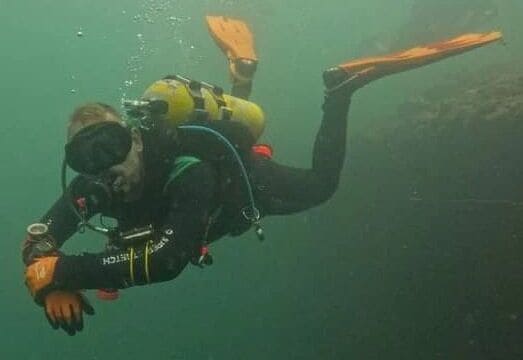
The Benefits of Harness-Based Systems
Harness systems, in contrast, offer a universal snug fit, precision adjustment, and limitless customization to suit individual divers.
- When paired with a wing-style compensator of the right size, these systems deliver an optimal blend of streamlined design and comfort.
- The significance of streamlined design and comfort holds true for both open water and technical divers.
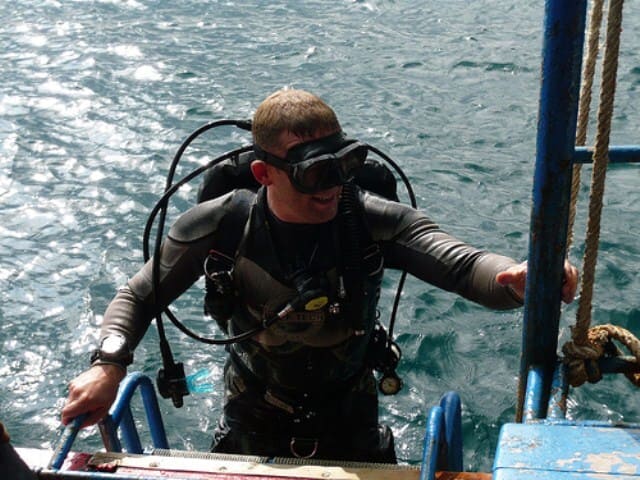
What is DIR and Hogarthian Dive Gear Configuration?
The Hogarthian dive gear configuration originated from the innovative mind of Bill Hogarth Main and evolved through countless dives into a state of Zen-like simplicity.
- It stands as a true embodiment of the ‘less is more’ philosophy, where each element within the Hogarth rig is meticulously considered in relation to the others.
- This meticulous curation results in a minimalist approach, integrating a select few components into a comprehensive life support system.
- The Hogarthian configuration is known for its cleanliness, efficiency, safety, and affordability.
Hogarthian configuration divers strive for nothing less than optimal. This contrasts with divers who prefer to mix and match equipment on an ad hoc basis, or who have a tendency to address skills-based problems with equipment fixes.
Key Points on Hogarthian Gear Configuration:
- Zen-Like Simplicity: The Hogarthian configuration, pioneered by Bill Hogarth Main, embraces the ‘less is more’ philosophy with a minimalist design.
- Meticulous Integration: Every component within the Hogarth rig is carefully chosen and harmoniously integrated to form a total life support system.
- Minimalist Essence: The Hogarthian approach is characterized by its clean, neat, safe, and cost-effective nature.
- Pursuit of Excellence: Hogarthian divers prioritize optimal gear and configurations, striving for the highest efficiency in their setup.
- Diver Variation: Divers who opt for mixed and matched equipment configurations deviate from the precision of the Hogarthian approach.
Differentiating Hogarthian Configuration from DIR
- Hogarthian Configuration is defined by a best-practice approach to gear selection and layout.
- DIR (Doing It Right) represents a comprehensive approach to diving that also encompasses team-based protocols, procedures, and standardized practices.
The Hogarthian configuration centers on a minimalist setup, whereas DIR extends beyond gear configuration to encompass diving methodologies, teamwork, and safety measures.
The Evolution of Hogarthian Dive Gear Configuration
The Hogarthian dive gear configuration is the epitome of dive gear minimalism.
- Also referred to as the Hogarthian system, it serves as the foundation of all DIR diving practices.
- Originating from American cave diving during the 1980s and early 90s, this configuration remains progressive and virtually unchanged, despite the passage of time.
- It was conceived and developed by renowned cave divers such as William Hogarth Main, Bill Gavin, and Sheck Exley within Florida’s cave diving community during the 1980s.
- The development was heavily influenced by accident analysis to decipher what promoted safety, and what posed risks.
Key Points on the Development of Hogarthian Configuration:
- Minimizing Risk: The configuration’s genesis was rooted in the desire to reduce the mortality rate in cave diving, a sport deemed highly dangerous.
- The Basic Concept: A fundamental concept emerged: eliminate unnecessary elements and streamline essential components for safety and efficiency.
- Enduring Philosophy: Remarkably, this simple yet strict minimalist configuration has demonstrated its lasting relevance through decades of diving advancements.
- Adaptability: Despite the emergence of technical diving and equipment advances, the Hogarthian configuration continues to stand the test of time.
Why is minimalism preferable in dive gear design?
Embracing the KISS Principle
- Minimalism in dive gear design follows the “Keep It Simple, Stupid” (KISS) principle, prioritizing simplicity for optimal effectiveness.
- This approach champions designs that are clear, easily comprehensible, and free from unnecessary complexity.
Enhancing Situational Awareness
- The simplicity of dive gear design bolsters situational awareness by reducing cognitive load.
- This allows divers to concentrate on crucial tasks without unnecessary distractions.
- Cognitive ease is heightened, facilitating quicker decision-making and problem-solving during dives.
Increasing Dive Safety
The advantages of minimalism in gear design play a pivotal role in enhancing dive safety.
- The reduction of complexities minimizes the potential for errors, enhances response efficiency, and fosters improved communication among divers.
- The absence of clutter in minimalist design further streamlines equipment usage, contributing to a safer and more enjoyable diving experience.
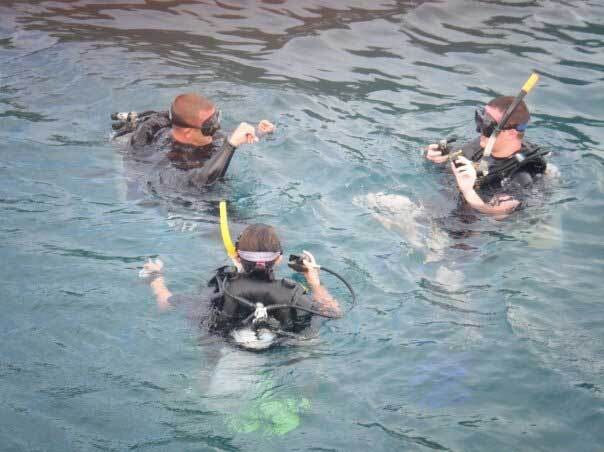
The Harness and Backplate
Diver’s Harness: Prioritizing Simplicity and Safety
A diver’s harness should be designed for safety, with a focus on minimizing failure points.
Instead of opting for quick-release buckles or other seemingly convenient features, it’s crucial to recognize that these shortcuts can actually increase risk rather than save time.
- Quick-release buckles, for instance, might fail during a dive, leading to a potential detachment of life support equipment at a critical moment.
- Divers with experience in activities like climbing or parachuting understand the importance of secure equipment and might be wary of mechanisms that allow gear to “easily come off.”
Buckles and Failure Points
Quick-release (QR) buckles can be unreliable and compromise safety.
- For example, plastic QR buckles can break during a dive, causing a diver’s life support equipment to disconnect unexpectedly.
- This is a perilous situation, as the diver could lose crucial gear during a critical phase of the dive.
Crotch Strap: Essential for Stability
The crotch strap, an integral part of the harness, stabilizes the rig.
- This strap prevents the diving system from shifting upward towards the head when entering the water or inverting.
- The front D-ring on a BP&W crotch strap also proves invaluable during dives involving a diver propulsion vehicle (DPV).
Effective Equipment Storage
The area beneath the tanks provides an excellent storage space for equipment.
- A strategically placed D-ring on the rear crotch strap allows divers to store items like DSMBs and spools.
- Backplate pads are available which also integrate a storage pocket for lift bags.
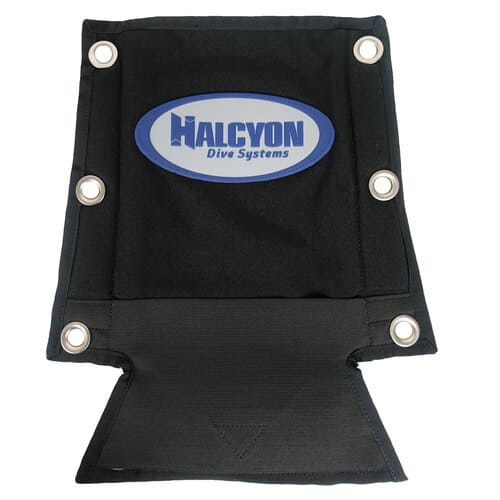
Streamlined Design of the DIR Harness
Some manufacturers clutter harnesses with superfluous D-rings, chest straps, integrated weight systems, pockets, and adjustable buckles. In contrast, the DIR and Hogarthian harness approach embodies simplicity for effective functionality.
Minimalist D-Ring Arrangement
The DIR harness employs a minimalist approach, featuring only essential D-rings.
- Each shoulder strap boasts one D-ring, while the diver’s left hip hosts another.
- Additionally, the crotch strap accommodates two D-rings.
- The chest D-rings are slightly bent to facilitate easy clipping of stage and deco cylinders.
- The left hip D-ring is reserved for the submersible pressure gauge (SPG) and deco or pony cylinders.
- The front crotch strap D-ring is meant for DPV attachment, while the rear one is used for stowing a DSMB, finger spool, and/or reel.
Equipment Attachment Strategy
Attaching equipment to the front D-ring is discouraged due to potential entanglement and drag issues.
Instead, any additional gear being towed should be connected to the rear crotch strap D-ring.
Remarkably, even with just these D-rings, the highest-level divers effectively manage multiple bottles, scooters, and cameras.
Proper technique emphasizes that equipment management is more about skill than the quantity of D-rings.
Backplate and Wing BCD: Essential Gear Placement
Certain essential gear items have specific placements on the harness for accessibility and safety.
Knife Location
A small knife is placed in an open sheath on the waist belt.
- This positioning ensures that either hand can swiftly deploy it.
- The knife should be situated to the left of the waistbelt buckle and crotch strap.
Dive Lights
Two dive lights can be attached to the chest D-rings, one on each side.
- Configure the light/s with a small boltsnap using a cave knot.
- Rubber loops secure them to the straps beneath the diver’s shoulders.
- This arrangement guarantees quick access to the lights while keeping them out of the way.
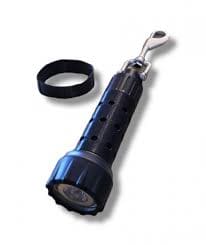
BP&W Harness Configuration for Different Diving Situations
The harness adapts to different diving scenarios, accommodating single and double tanks.
1. Single Tank Configuration
- For a single tank dive, the harness is usually secured to the cylinder using a single tank adaptor (STA).
- However, some single-tank wings come with an inbuilt tank stabilizer.
- The buoyancy compensator (BC) sits between the plate and the STA.
2. Double Cylinder Setup
- When diving with double cylinders, the backplate is affixed to the cylinders with a buoyancy wing sandwiched in between.
- The choice of wing size, which affects wing lift, depends on the specific type of diving being undertaken.
Diving Wings: Finding Balance and Reliability
There are common misconceptions among divers regarding the necessity of large buoyancy compensators (BCs) to meet their diving requirements. In reality, the idea of needing excessive lift is a misconception.
Can I use the same wing for single and double tank diving?
You could, but it would be an unsatisfying, and potentially hazardous, experience.
- Single tank wings are not wide enough to be used with double cylinders. They would not be able to inflate properly because of restrictions from being trapped beneath the cylinders.
- Double tank wings are too wide for use with single cylinders. There would be a ‘wing taco’ effect.
- This would mean that you could not easily control the location of gas inside the wing.
- Additionally, you may experience difficulties dumping gas from the wing.
- The wing would also not be streamlined in the water.
Ideal Wing Lift Requirements
- Diving Single Cylinders:
- <20lbs – Tropical diving with a single AL80
- 30lbs – Cold water diving with a steel cylinder or warm water diving with an additional pony cylinder.
- 40lbs – Cold water diving with a high-capacity steel cylinder and/or pony cylinder.
- Diving Double Cylinders:
- 40-45lbs – Aluminum or steel doubles with multiple stage/deco cylinders
- 50-90lbs – Very high capacity steels, plus multiple stage/deco cylinders (antiquated because most technical divers now use CCR for this level of diving!)
Backplate and Wing BCDs: A Balanced Rig is the Key
Diving wings should follow the Balanced Rig principle:
- Divers should be capable of shedding unnecessary weight and ascending without relying on wing lift.
- Examine the entire diving system and add a calculated amount of weight to achieve neutral buoyancy at the final shallow decompression stop.
- Consider the impact of suit compression at depth (decreased buoyancy) and gas consumption during the dive (increased buoyancy).
- Using steel cylinders with wetsuits is not advisable.
- Determine the minimum amount of detachable weight to enable a safe emergency swimming ascent.
- Use the backplate and trim weighting to cover the remaining weighting needs.
Steel Cylinders and Dry Suits
- Large steel cylinders are very negatively buoyant.
- They can work well to counter-weight drysuit buoyancy.
- The drysuit provides a means of redundant buoyancy.
Pitfalls of Dual Bladder Wings
Divers who opt for dual bladder wings may encounter several issues, including;
- Increased drag
- More gas migration around the wing
- Greater task complexity
- The risk of unintended inflation
The notion of “redundant buoyancy” contradicts the principles of a balanced rig.
- If using a dual bladder wing, do not connect the redundant LPI.
- A minor redundant bladder inflator leak can cause uncontrolled ascent
- The diver often attempts to empty the primary bladder while unaware of expanding gas in the redundant bladder.
- This has directly led to several fatal accidents, including the tragic death of trimix student Annalie Wada in 2013.
Caution Against Bungee Wings
Using bungee wings is ill-advised for several reasons. Bungee wing retention is only necessary when a diver buys a superfluously oversized wing. Despite claims of streamlining, these wings often result in the opposite effect due to their impact on hydrodynamics.
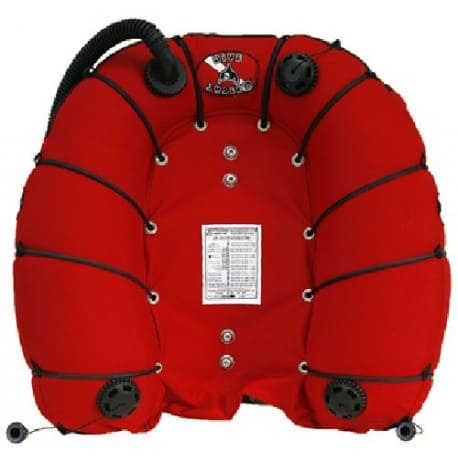
1. Hydrodynamics and Drag
- Rough surfaces created by bungees disrupt hydrodynamics, increasing turbulence and drag.
- Contrary to their intended purpose, bungees contribute to drag by creating a rough surface.
2. Stability and Buoyancy Concerns
- Bungees can prevent gas from freely moving around the wing, causing instability issues.
- Similarly, bungees can impede gas from moving to the pull-dump location when the diver is trying to vent gas and control their buoyancy.
3. Oral Inflation Difficulties
- A critical problem with bungee wings is their resistance to oral inflation.
- Oral inflation becomes notably harder due to the presence of constricting bungees, raising safety concerns.
4. Wing failures
- If the wing fails due to a puncture or tear, the bungees will forcefully contact to push more gas out of the wing.
- This tendency prohibits the diver from using careful trim positioning to retain gas inside a failed wing.
Putting Together Your Backplate and Wing BCD
The following video gives a great outline for how to configure your backplate and wing BCD:
It’s Worth Thinking About Your Backplate and Wing BCD Configuration
In conclusion, optimizing your backplate and wing BCD configuration is pivotal for a safe and efficient diving experience.
The rise of backplate and wing systems has showcased their remarkable advantages, with the DIR and Hogarthian concepts taking the forefront. Here are the key takeaways:
- Minimalism Matters: Embrace the Keep It Simple, Stupid (KISS) principle in gear design. This enhances situational awareness and dive safety.
- Harness for Stability: Simple, continuous webbing harness-based systems provide enhanced stability and safety.
- Strategic Placement: Where you attach other dive gear, like DSMBs, spools, reels, knives, and dive lights significantly affects the ease of access and your overall streamlining.
- Tailored Harness Setup: Whether diving with single or double tanks, tailor your harness to ensure optimal comfort and control.
- Wing Lift Precision: Achieving the right amount of wing lift is crucial for buoyancy control, requiring a balanced approach to prevent issues during dives.
- Pitfalls to Avoid: Dual bladder and bungee wings can lead to hydrodynamic drag, buoyancy instability, oral inflation difficulties, and lost gas during wing failures. Avoid these known pitfalls.
- Balancing Reliability and Design: Striking the balance between equipment simplicity, ruggedness, and streamlined configuration is essential for optimized diving.
With a well-configured backplate and wing BCD, you’re equipped for safer and more enjoyable underwater adventures. So, dive in with confidence and explore the depths responsibly.
About The Author

Andy Davis is a RAID, PADI TecRec, ANDI, BSAC, and SSI-qualified independent technical diving instructor who specializes in teaching sidemount, trimix, and advanced wreck diving courses.
Currently residing in Subic Bay, Philippines; he has amassed more than 10,000 open-circuit and CCR dives over three decades of challenging diving across the globe.
Andy has published numerous diving magazine articles and designed advanced certification courses for several dive training agencies, He regularly tests and reviews new dive gear for scuba equipment manufacturers. Andy is currently writing a series of advanced diving books and creating a range of tech diving clothing and accessories.
Prior to becoming a professional technical diving educator in 2006, Andy was a commissioned officer in the Royal Air Force and has served in Iraq, Afghanistan, Belize, and Cyprus.
In 2023, Andy was named in the “Who’s Who of Sidemount” list by GUE InDepth Magazine.
Purchase my exclusive diving ebooks!
Originally posted 2023-08-25 17:23:32.








